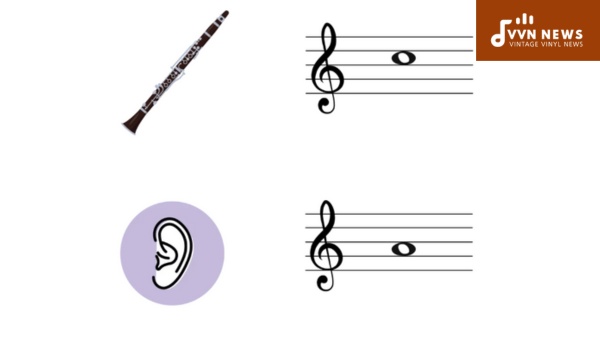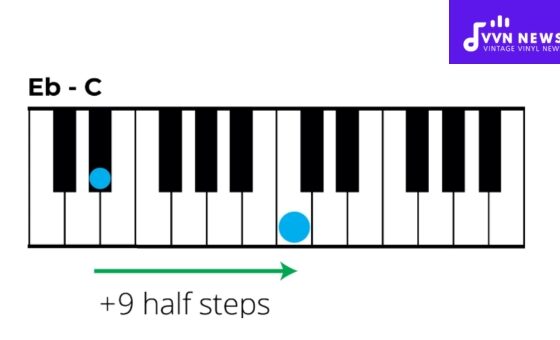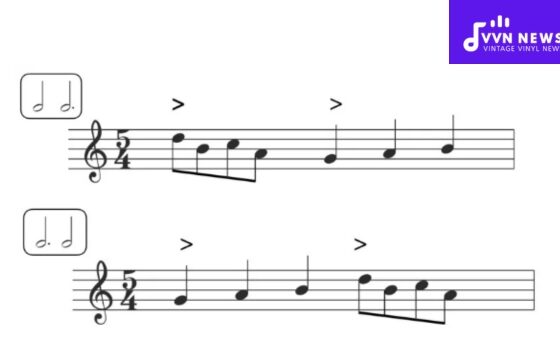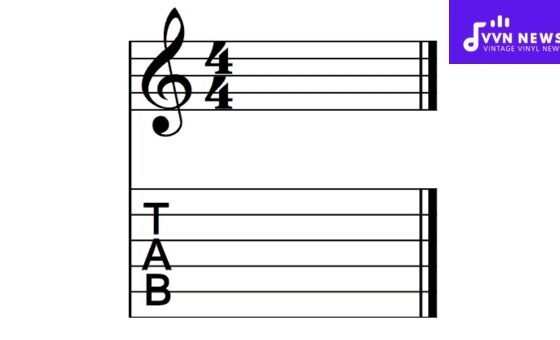Transposition for clarinet in A is a topic that often falls under the radar for many music enthusiasts. However, understanding and utilizing transposition can greatly enhance your skills as a clarinet player.
In this blog post, I will shed light on the concept of transposition, specifically for clarinetists playing in the key of A.
Whether you’re a beginner just starting or an experienced musician looking to expand your repertoire, these pro tips will help you navigate the world of transposition with ease.
When it comes to transposition, many musicians tend to shy away due to its perceived complexity. However, with a little guidance and practice, transposing music for clarinet in A can become second nature.
In this article, we will delve into the basics of transposing music and explore helpful techniques to smoothly transpose scores written for other instruments into the key of A. So grab your clarinet and let’s dive into the world of transposition for clarinet in A!
What Is the Clarinet in A?
The clarinet in A is a variant of the clarinet family that is tuned to the key of A. It is commonly used in orchestras and chamber music settings, where its unique tonal qualities and pitch range come into play.
The clarinet in A is slightly longer than its B-flat counterpart, which gives it a richer and darker sound. To differentiate between the two, clarinets in A are often seen with an additional key on the upper joint.
This extra key allows players to access notes that are written lower than their sounding pitch on the instrument. The clarinet in A offers a distinct timbre and opens up a wider range of musical possibilities for skilled players.
Also Read: Instruments Of The Orchestra [Introduction To The Symphony]
How Do You Transpose Clarinet in A Concert Pitch?
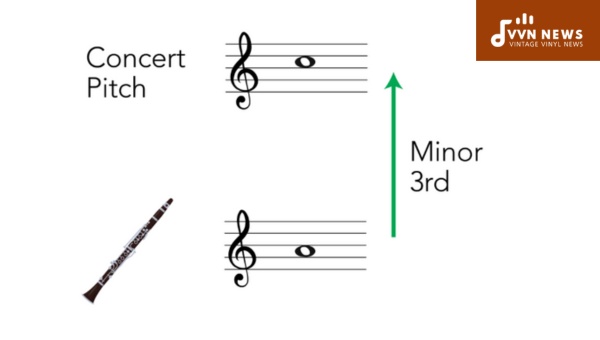
Transposing music for the clarinet in A to concert pitch is a fundamental skill that every clarinetist should master.
It involves changing the written notes on the sheet music so that they sound in their proper pitch when played on the A clarinet. Here are the steps to transpose the clarinet in A to concert pitch:
- Understand the transposition: The clarinet in A is a transposing instrument, meaning that when you see a C written on the music, it will sound like an A when played on your instrument. To transpose, you need to know how many steps up or down the written note corresponds to its sounding pitch.
- Use a transposition chart: Start by obtaining a transposition chart specifically designed for clarinet in A. This chart will help you determine which note on your sheet music corresponds to which note on your clarinet.
- Identify the key of your music: Look at the key signature of your sheet music and determine which key it is written in. This will give you an idea of how many steps up or down you need to transpose.
- Match up the notes: Using your transposition chart, match each note written on your sheet music with its corresponding note on your clarinet in A.
- Practice with scales and arpeggios: To become comfortable with transposing, practice playing scales and arpeggios in different keys on your clarinet in A.
By following these steps and practicing regularly, you will be able to transpose quickly and accurately from written notation to sounding pitch on your clarinet in A, allowing you to perform any piece of literature with confidence and musicality.
Transposition Chart of Clarinet in A
Understanding the transposition chart for clarinet in A is key to successfully transposing music written for other instruments. Let’s dive into the details:
Clarinet in A Key Signature:
- The clarinet in A is a transposing instrument, meaning that the notes it plays are written at a different pitch than what sounds.
- When playing the clarinet in A, you need to compensate by reading and playing different notes than what is written on the sheet music.
- The key signature for the clarinet in A is three semitones lower than the concert pitch (B flat).
Chart of Transpositions:
- To simplify transposing, it is helpful to refer to a transposition chart specifically designed for the clarinet in A.
- Below is a general guide to aid you in transposing from concert pitch to clarinet in A: Concert Pitch Clarinet in A C E D F# E G# F B G C# A E B F#
Applying the Transposition:
- Determine the key of the original piece you wish to transpose.
- Locate each note on the music score and identify its corresponding note on the transposition chart.
- Rewrite or mentally convert each note accordingly, taking into account any accidentals or key changes within the piece.
Also Read: How To Clean Your Flute [Keep Your Instrument Shiny & Sounding Great]
Tips for Successful Transposition:
- Practice sight-reading and becoming familiar with your instrument’s fingerings. This will help you quickly identify and play notes during live performances.
- Use a pencil to mark your sheet music with any necessary adjustments or alterations during transposition.
- Experiment with different practice techniques, such as playing along with recordings or using transposition exercises, to improve your skills.
Transposing can be challenging at first, but with practice and patience, it will become easier. The more you practice transposing for the clarinet in A, the quicker and more accurate you’ll become at reading and playing music in different keys.
What Are the Steps to Transpose the Clarinet in A to B-flat?
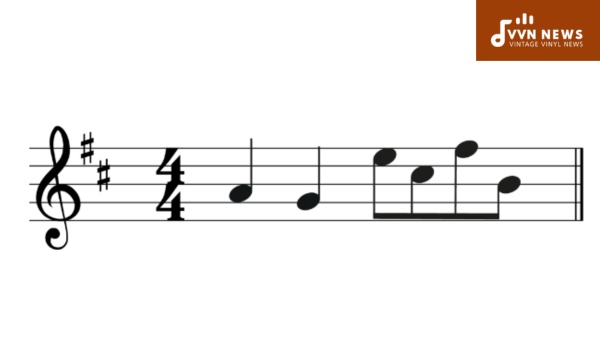
Transposing music from clarinet in A to B-flat might seem daunting at first, but with a few simple steps, you’ll be able to confidently play your favorite tunes on your B-flat clarinet. Here’s a step-by-step guide:
- Understand the difference: The clarinet in A is a transposing instrument, meaning that when it plays a note written as a concert C, it will sound like an A. On the other hand, the B-flat clarinet is a non-transposing instrument where the concert pitch matches the written pitch.
- Identify the key signature: Before you start transposing, be sure to identify the key signature of the original sheet music. This will help ensure accuracy throughout the process.
- Determine interval distance: To transpose from the clarinet in A to B-flat, you need to know the interval distance between these two keys. The interval between A and B-flat is a minor 9th or one whole step downward.
- Adjust all notes: To transpose each note, subtract a whole step (minor 9th) from its original written pitch on clarinet in A. For example, if you have an E on clarinet in A, you would play a D on your B-flat clarinet instead.
- Consider clefs and key changes: Keep an eye out for any changes in clefs or key signatures as you go through your music. Make sure to account for these changes when transposing from clarinet in A to B-flat.
- Practice and double-check: Once you’ve transposed all the notes, take some time to practice playing through your newly transposed piece on your B-flat clarinet. Double-check for any potential mistakes or inconsistencies and make adjustments as needed.
Transposing can be challenging at first but with practice and patience, it will become easier over time. The key is to familiarize yourself with the process and practice transposing regularly.
Also Read: Best Practice Duration For Your Instrument? [Master Your Talent]
How to Transpose Clarinet in A to Alto Sax?
Transposing music from clarinet in A to alto saxophone can be quite straightforward once you understand the process. Here are the steps to help you transpose efficiently:
Step 1: Understand the Difference in Key
The clarinet in A is pitched a minor third higher than the alto saxophone, which means that when you play a written C on the clarinet, it will sound like an E flat on the alto saxophone. It’s important to keep this difference in mind throughout the transposition process.
Step 2: Determine Interval Relationship
To transpose a piece of music, you need to identify the interval relationship between the original clarinet part and the desired alto saxophone part. This will guide you in transposing each note correctly. For example, if you come across a written C on the clarinet, you’ll need to play an E flat on the alto saxophone due to the minor third difference.
Step 3: Use a Transposition Chart
Having a transposition chart handy can be incredibly helpful during this process. These charts display each note of one instrument’s written pitch alongside its corresponding pitch on another instrument. Look for a chart specifically for transposing between clarinet and alto saxophone, and refer to it as needed while transposing.
Step 4: Apply Transposition Across the Entire Piece
Once you’ve figured out the interval relationship and have your transposition chart ready, apply these adjustments consistently across every note of your piece. Keep track of accidentals, dynamic markings, and any other musical instructions—transpose them accordingly.
Step 5: Practice and Refine
Transposing takes practice! Spend time playing through your newly transposed piece on your alto saxophone. Listen carefully for any errors or inconsistencies and make adjustments as needed.
Transposing from clarinet in A to alto saxophone will become more intuitive, and you’ll be able to adapt your repertoire to suit different instruments.
Also Read: Flute Vs Recorder [Which Instrument Is Best For You?]
What’s the Process for Transposing Clarinet in A to French Horn?
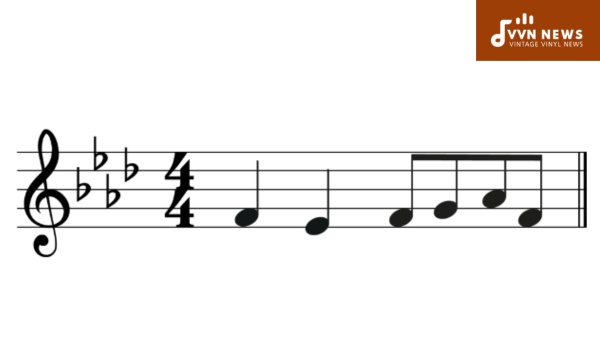
Transposing music from clarinet in A to French horn may seem daunting at first, but with a clear understanding of the process, it can become a straightforward task.
Here is a step-by-step guide to help you transpose clarinet in A music to French horn:
- Understand the key difference: The clarinet in A is a transposing instrument, meaning that when it plays a written C, it sounds like an A. The French horn, on the other hand, is a non-transposing instrument, which means that when it plays a written C, it sounds as written.
- Determine the interval: To transpose from clarinet in A to French horn, you need to determine the interval between the two instruments’ sounding pitches. In this case, the clarinet in A sounds a minor sixth lower than the written pitch.
- Apply the transposition: Take every note in the original clarinet in A music and move it up a minor sixth on your sheet music for French horn. For example, if you see a written C on the clarinet score, you would play an F on the French horn.
- Account for key signatures: Keep in mind that when transposing to French horn from clarinet in A, you will have to account for any key signature changes as well. Adjust sharps and flats accordingly based on the new key.
- Check for range compatibility: The French horn has a narrower range than the clarinet, so ensure that all notes being transposed are within the playable range of the instrument.
- Play and adjust if necessary: Once you have transposed all of the notes, play through your newly transposed sheet music on your French horn. Make any necessary adjustments to ensure accuracy and clarity.
Transposing from clarinet in A to French horn requires careful attention to detail and familiarity with both instruments.
By following these steps, you can successfully transpose clarinet in A music to French horn and expand your repertoire for this beautiful brass instrument.
How to Transpose Clarinet in A to Guitar?
Transposing clarinet music into guitar tabs can be a rewarding endeavor for musicians looking to expand their repertoire.
While the clarinet is a transposing instrument, meaning it sounds at a different pitch than it is written, the guitar is not.
So, transposing clarinet music to guitar requires careful consideration and understanding of both instruments. Here’s a step-by-step guide on how to transpose clarinet in A to guitar:
- Determine the Key: First, identify the key of the clarinet piece you wish to transpose. This will help you determine the appropriate chords and scales for the guitar.
- Identify the Range: Clarinets have a wide sound range, from low notes to high ones. Identify the highest and lowest notes in the clarinet piece as these will determine your starting and ending points for transposition.
- Transpose by Octave: Since guitars are tuned differently than clarinets, you’ll need to transpose the music up or down by one or more octaves. This ensures that your guitar sounds in the same pitch range as the original clarinet piece.
- Use Guitar Tablature: Convert the notes from sheet music into guitar tablature format. Tablature shows which strings and frets should be played on the guitar instead of standard notation.
- Consider Capo Positioning: If you’re unable to play some of the chords or reach certain notes due to transposition, consider using a capo on your guitar. Placing a capo on a higher fret can effectively raise the pitch of open strings and allow easier access to desired notes.
- Experiment with Chords and Voicings: Depending on how complex or simple your transposed piece is, experiment with different chord voicings and inversions on your guitar to maintain harmonic accuracy.
Transposing clarinet in A music to guitar requires practice and a good understanding of both instruments.
With dedication and patience, you’ll be able to successfully transpose clarinet music into guitar tabs and expand your musical repertoire.
Also Read: Types Of Flutes [Explore The Rich Variety Of This Instrument]
FAQs About Transposition For Clarinet In A
What is the difference between clarinet in A and clarinet in B-flat?
The main difference between the clarinet in A and the clarinet in B-flat is the key that they are tuned to. The clarinet in A produces a slightly lower pitch than the B-flat clarinet, giving it a darker and richer sound.
How do you transpose music for clarinet in A to concert pitch?
To transpose music for clarinet in A to concert pitch, you simply need to play the written notes on the sheet music as if they were written for a B-flat instrument. This means playing all notes a whole step higher than what is written.
Is there a transposition chart available for clarinet in A?
Yes, there are transposition charts available that can guide you through the process of transposing music for clarinet in A. These charts provide you with the correct fingerings and note names that correspond to each written note.
Can I transpose my music from clarinet in A to B-flat?
Yes, it is possible to transpose your music from clarinet in A to B-flat. You will need to play all notes a whole step lower than what is written on the sheet music.
How can I transpose my music from clarinet in A to alto saxophone?
To transpose your music from clarinet in A to alto saxophone, you will need to play all notes up a major sixth from what is written on the sheet music. This means if you see a C on your original sheet music, you should play an A on the alto saxophone.
Conclusion
Transposition for clarinet in A may seem daunting at first, but with practice and understanding, it becomes an essential skill for any clarinet player.
By familiarizing yourself with the transposition process and utilizing helpful tools such as transposition charts, you can confidently transpose music written for other instruments into the key of A.
Remember to consult resources specific to your instrument’s key, such as tutorials or instructional books dedicated to the clarinet in A.
With these pro tips, you’ll be well-equipped to tackle the world of transposition and enhance your musical abilities on the clarinet in A.
